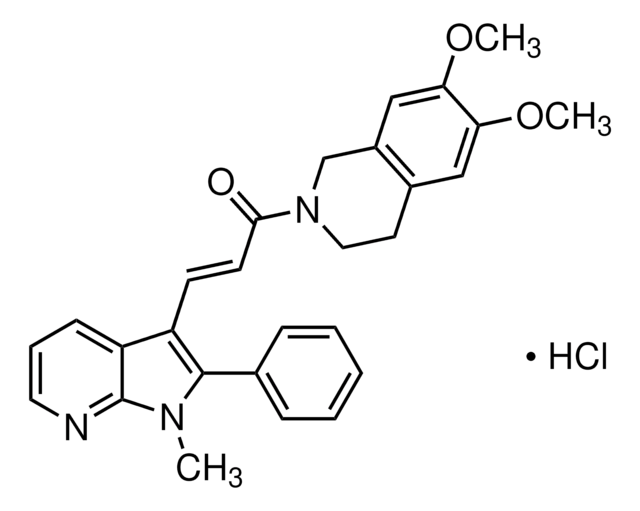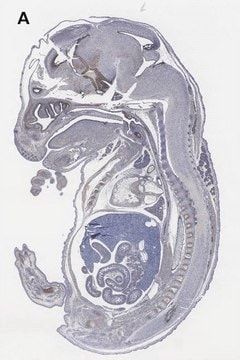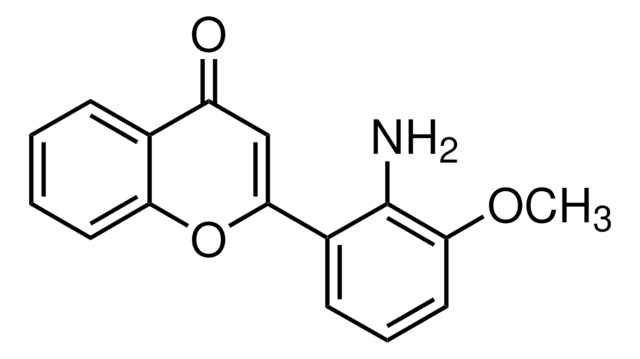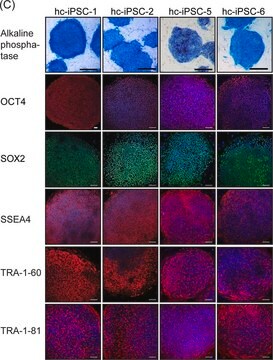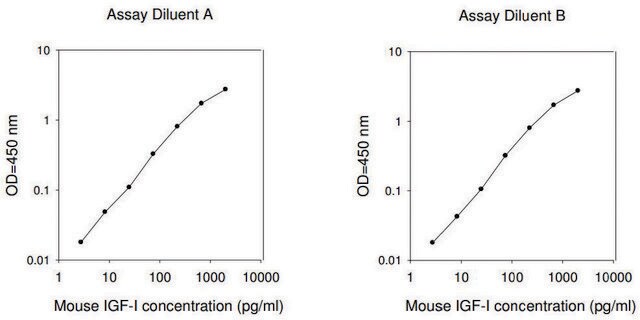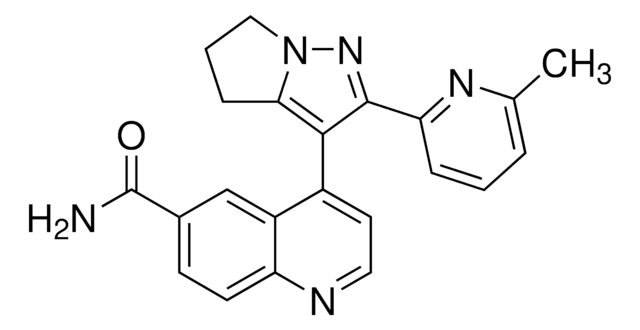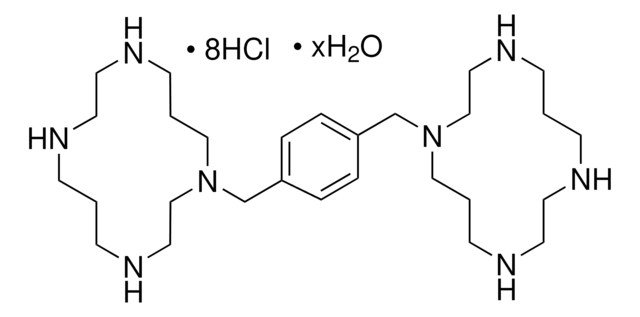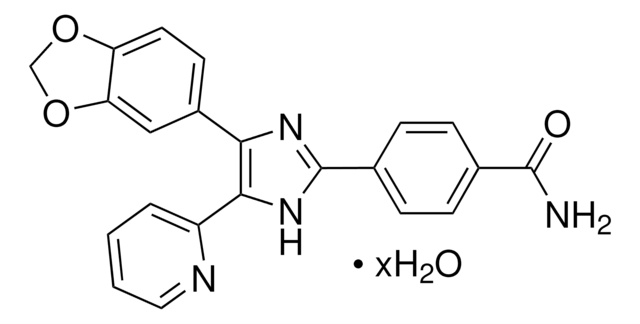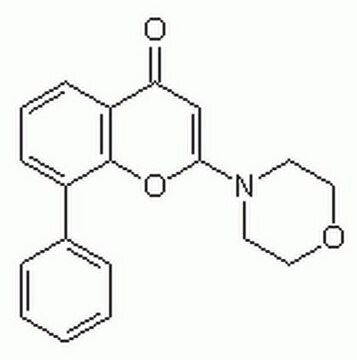566405
SIS3
≥90% (HPLC), solid, Smad3 inhibitor, Calbiochem®
Synonyme(s) :
Smad3 Inhibitor, SIS3, SIS3, 6,7-Dimethoxy-2-((2E)-3-(1-methyl-2-phenyl-1H-pyrrolo[2,3-b]pyridin-3-yl-prop-2-enoyl))-1,2,3,4-tetrahydroisoquinoline, Specific Inhibitor of Smad 3
About This Item
Produits recommandés
product name
Smad3 Inhibitor, SIS3, Smad3 Inhibitor, SIS3, CAS 1009104-85-1, is a cell-permeable, selective inhibitor of TGF-β1-dependent Smad3 phosphorylation and Smad3-mediated signaling. Does not affect Smad2, MAPK, ERK, or PI3-K.
Niveau de qualité
Pureté
≥90% (HPLC)
Forme
solid
Fabricant/nom de marque
Calbiochem®
Conditions de stockage
OK to freeze
protect from light
Couleur
off-white
Solubilité
DMSO: 15 mg/mL
ethanol: 5 mg/mL
Conditions d'expédition
ambient
Température de stockage
2-8°C
InChI
1S/C28H27N3O3/c1-30-27(19-8-5-4-6-9-19)22(23-10-7-14-29-28(23)30)11-12-26(32)31-15-13-20-16-24(33-2)25(34-3)17-21(20)18-31/h4-12,14,16-17H,13,15,18H2,1-3H3
Clé InChI
IJYPHMXWKKKHGT-UHFFFAOYSA-N
Application
Actions biochimiques/physiologiques
TGF-β1-dependent Smad3 phosphorylation and Smad3-mediated cellular signaling
Conditionnement
Avertissement
Reconstitution
Autres remarques
Product does not compete with ATP.
Cell permeable: yes
Jinnin, M., et al. 2006. Mol. Pharmacol.69, 597.
Informations légales
Code de la classe de stockage
11 - Combustible Solids
Classe de danger pour l'eau (WGK)
WGK 1
Point d'éclair (°F)
Not applicable
Point d'éclair (°C)
Not applicable
Certificats d'analyse (COA)
Recherchez un Certificats d'analyse (COA) en saisissant le numéro de lot du produit. Les numéros de lot figurent sur l'étiquette du produit après les mots "Lot" ou "Batch".
Déjà en possession de ce produit ?
Retrouvez la documentation relative aux produits que vous avez récemment achetés dans la Bibliothèque de documents.
Les clients ont également consulté
Notre équipe de scientifiques dispose d'une expérience dans tous les secteurs de la recherche, notamment en sciences de la vie, science des matériaux, synthèse chimique, chromatographie, analyse et dans de nombreux autres domaines..
Contacter notre Service technique